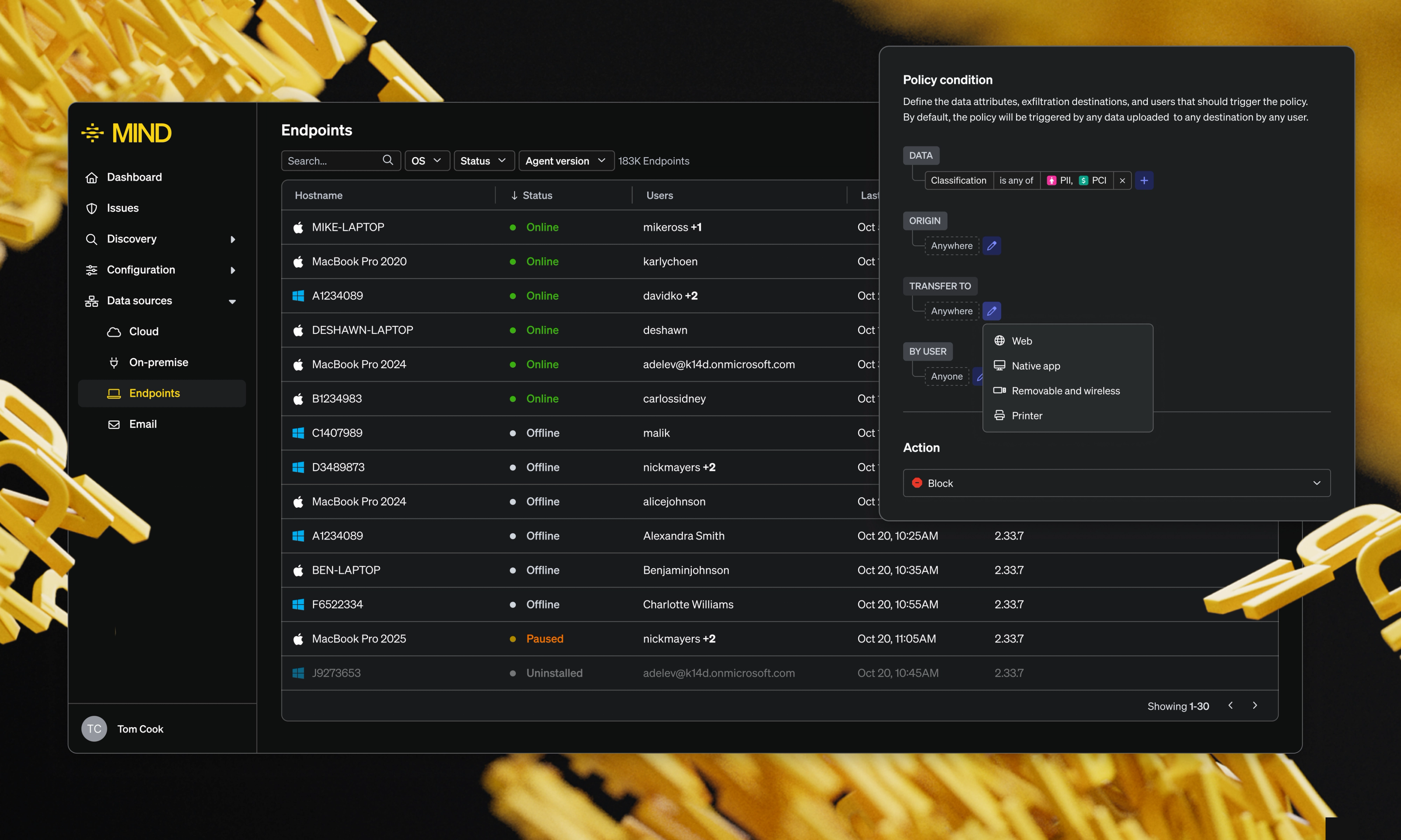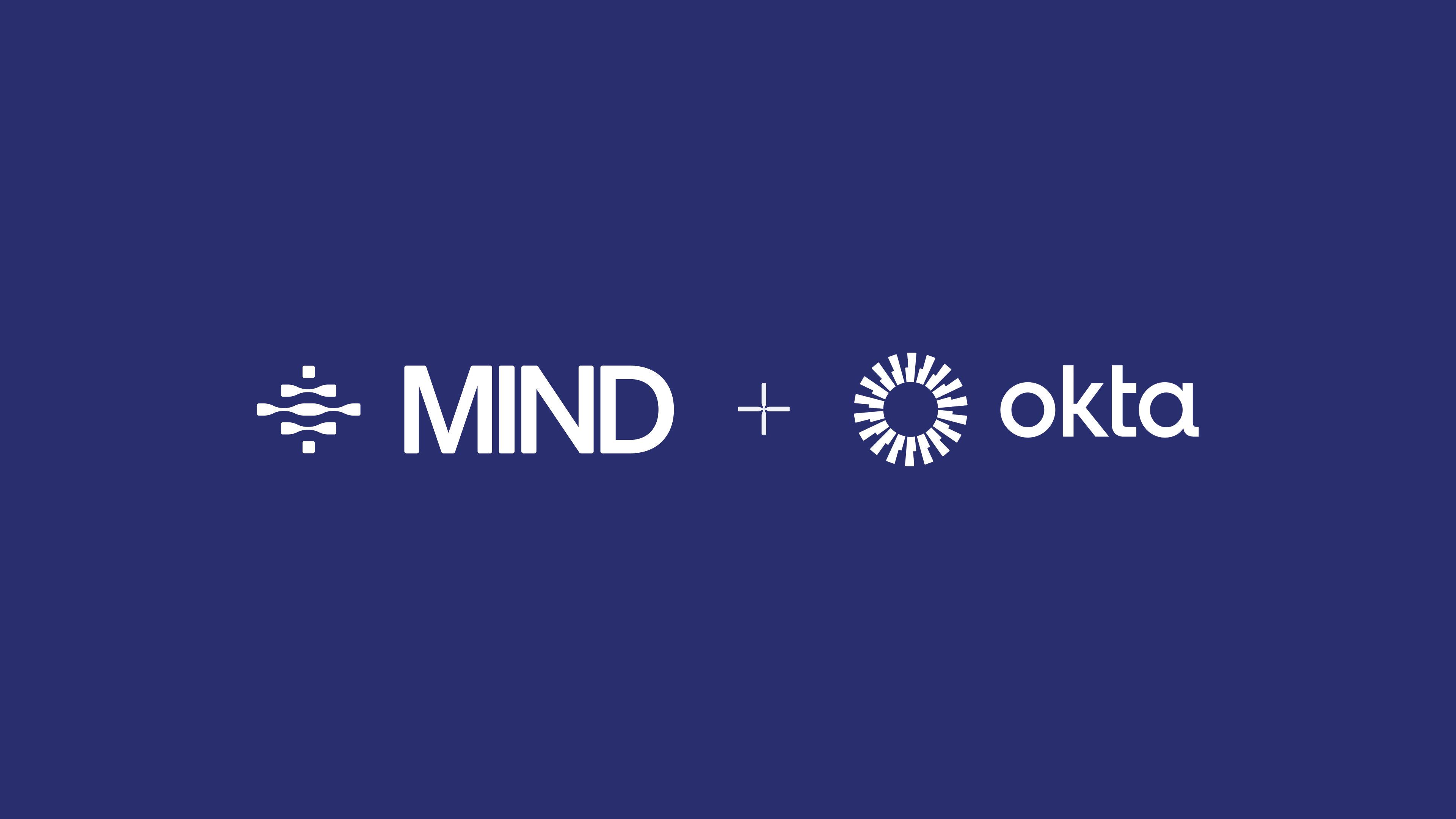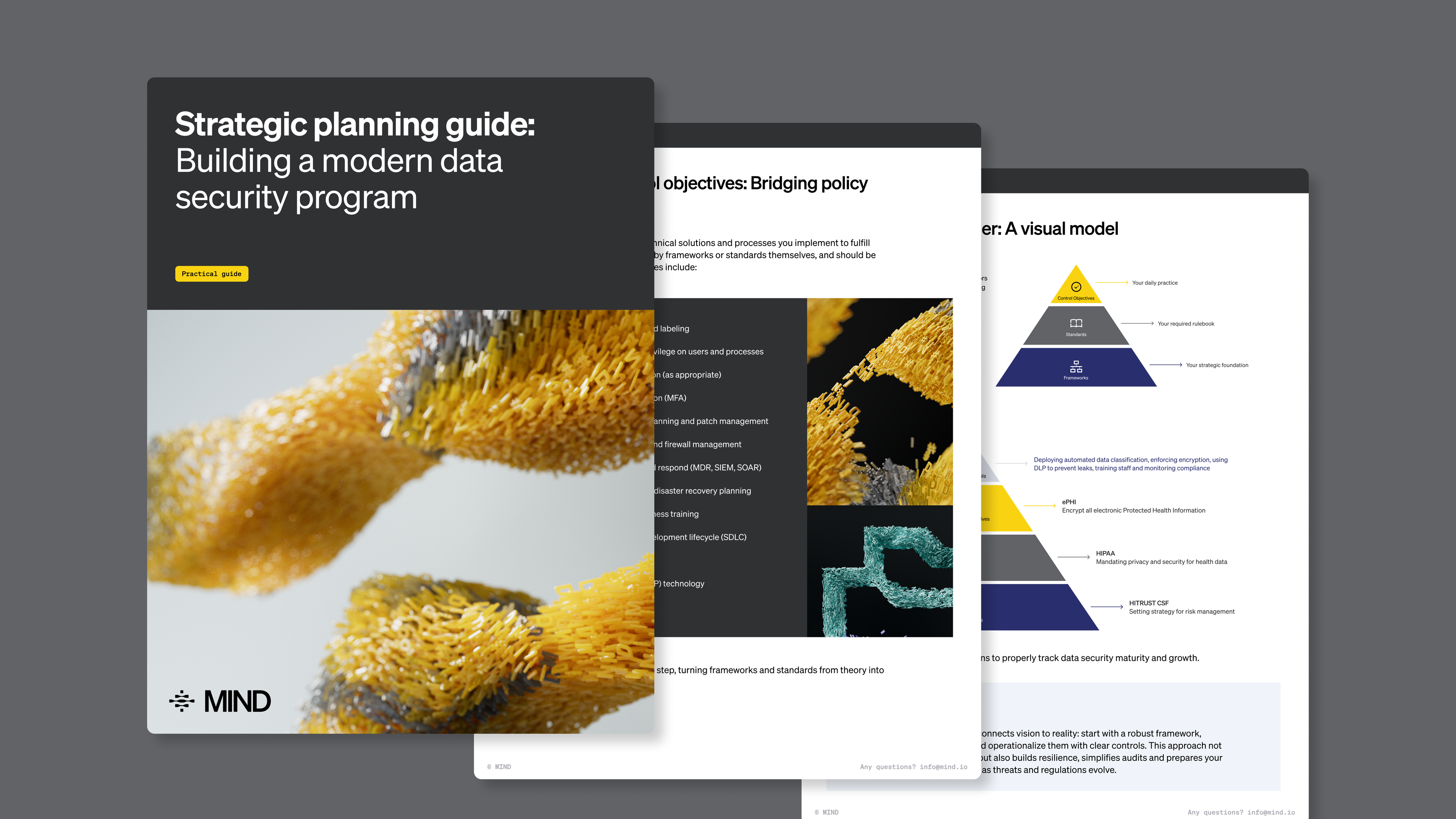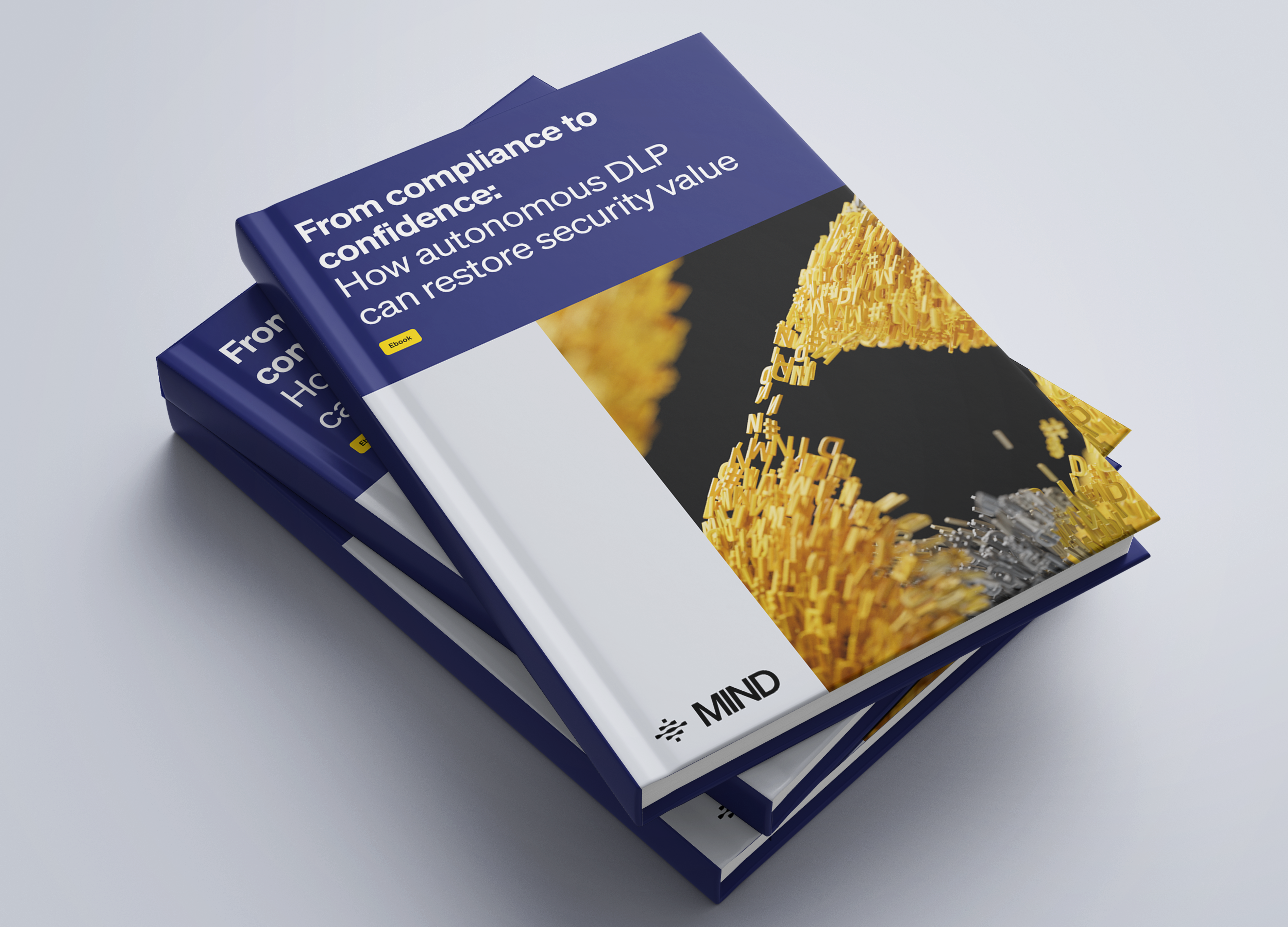Cloud, SaaS and GenAI platforms have become the epicenter of unstructured data growth, now accelerating at 45% CAGR. Sensitive data spreads rapidly, often mislabeled, over-permissioned or exposed through AI tools. As this data exposure surface expands across these platforms, data loss prevention (DLP) is more important than ever.
And it’s never been more stressful.
Legacy tools can’t keep up. According to ESG, 94% of organizations use multiple point tools to manage DLP, resulting in disconnected operations and fragmented visibility. The result? Gaps, noise and escalating risk. Protecting unstructured data across cloud, SaaS and GenAI is now the foundation of modern security.
How do you make DLP stress-free?
The journey to Stress-Free DLP is a step-by-step process that requires getting six core capabilities right and then doing them together, continuously.
1
Find unstructured data anywhere it lives
2
Classify and label sensitive data automatically
3
Identify risks in real time, not just alert noise
4
Automatically fix exposure risks fast
5
Create and manage dynamic policies
6
Enforce actions precisely at the point of risk
The most advanced data security platform
MIND is built around a simple vision: To revolutionize data security and DLP for unstructured data at rest and in motion by innovating with simplicity, AI and automation in MIND.
- Discovery
MIND continuously scans SaaS and GenAI apps, endpoints, on-prem file shares and emails to find unstructured data. It goes beyond metadata, sampling or tracing, inspecting both content and context to identify sensitive material regardless of where it resides or how it’s shared. - Classification
MIND AI, our multi-layer classification engine, uses machine learning and natural language models to identify sensitive data, not just structured fields. It applies semantic and behavioral context to reduce false positives and accurately tag content that manual RegEx-based approaches miss.
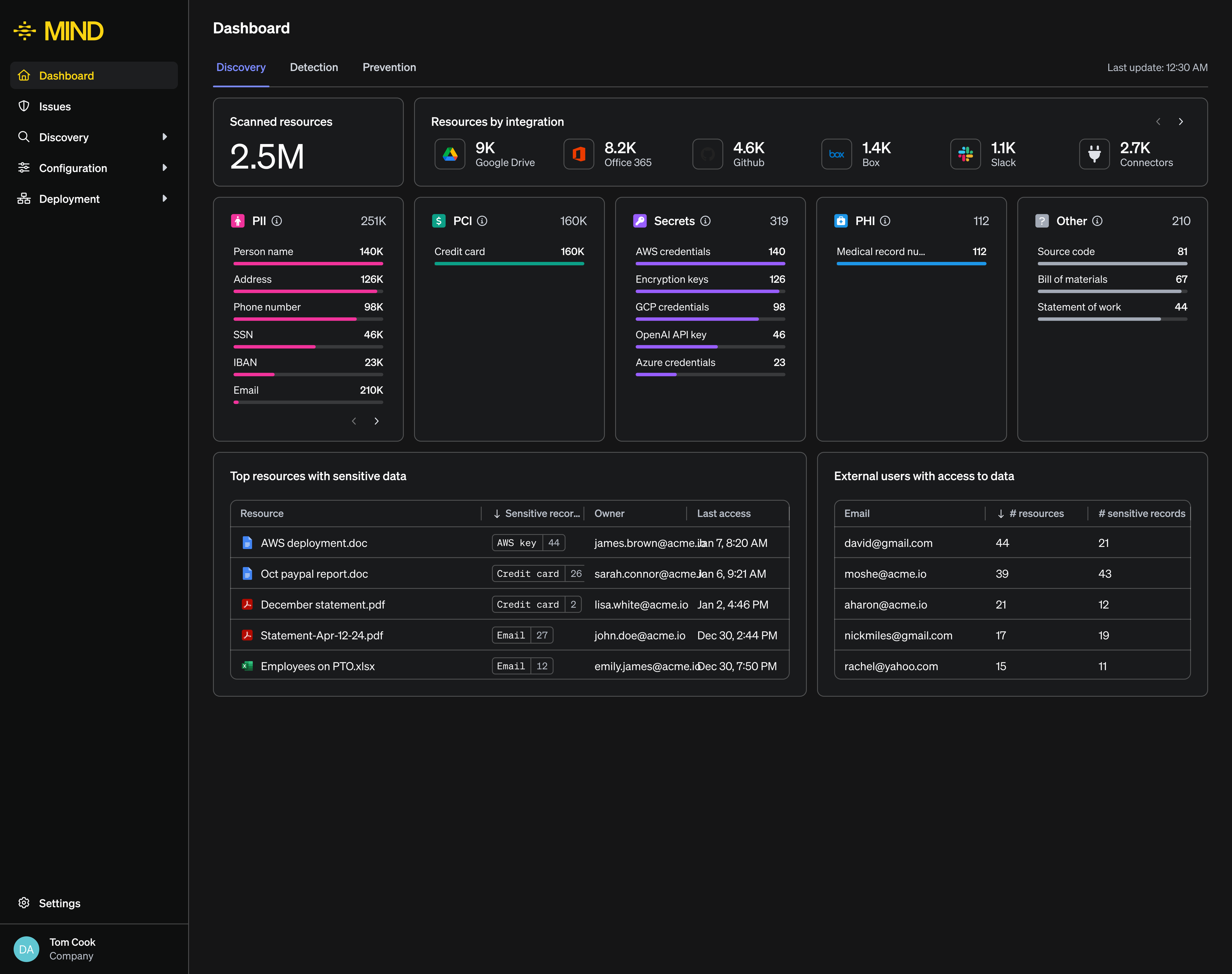
- Detection
MIND autonomously monitors billions of data events and exposure risks in real-time. It detects data movement across endpoints, browsers and SaaS apps, correlating access behavior, user role and content sensitivity. MIND flags over-permissioned content, public link sharing and GenAI tool misuse without flooding security teams with irrelevant alerts. - Remediation
Once a risk is identified, MIND can trigger automated actions: revoke shared links, restrict access, quarantine files or message users via Slack, Teams or email. Every response is logged with redacted context or collected evidence to support compliance workflows, while ensuring sensitive information is not exposed.
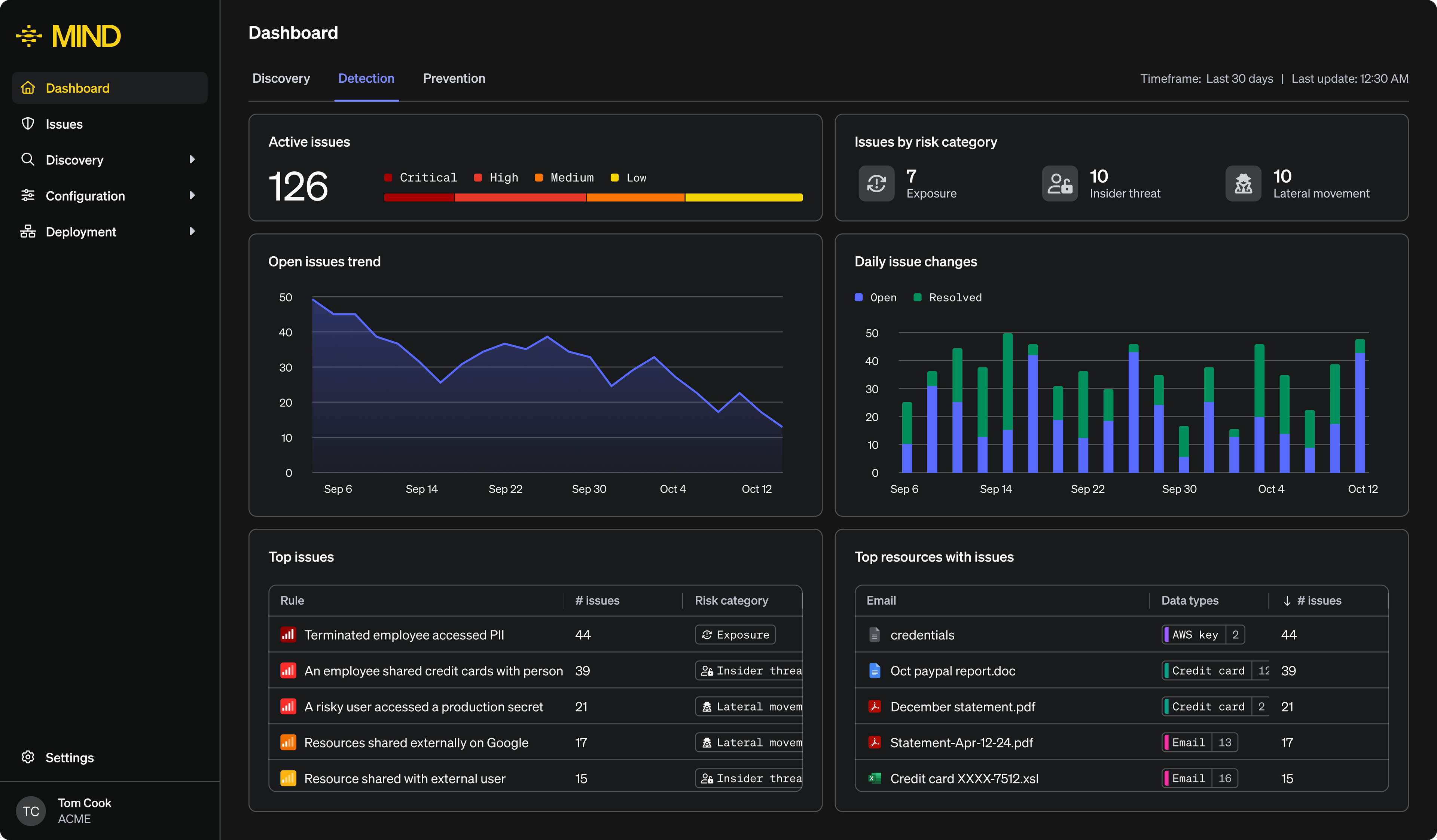
- Policies
MIND’s policy engine enables security teams to define intent-based controls using natural language and logic, not brittle rules. Policies are adaptive, adjusting to new data types, workflows or user roles. This dynamic framework eliminates the need for constant tuning and enables policies to evolve in tandem with the business, without the burden of manual work. - Prevention
MIND enforces precise controls at the point of risk, across the browser, endpoint, SaaS or GenAI app. Whether that’s blocking copy/paste into ChatGPT, stopping unauthorized file uploads or warning a user in real time, MIND enables contextual prevention without unnecessary friction.
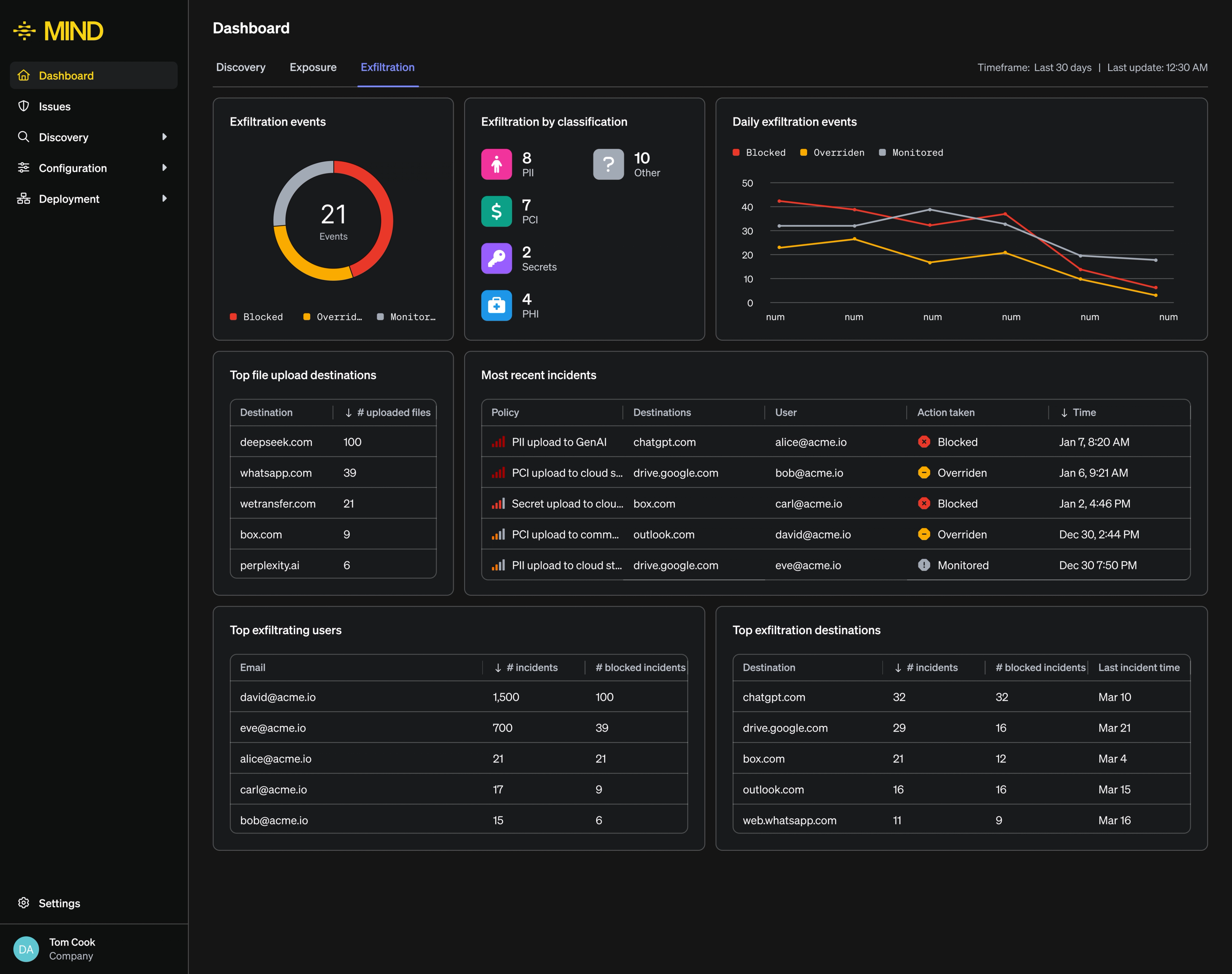
Complete, contextual coverage
MIND is powered by a modular, high-performance architecture designed to operate across the full spectrum of modern enterprise environments.
- Connectors, containers and agents
MIND connects directly to SaaS and GenAI apps, cloud storage, on-premise file shares and emails using native API connectors or lightweight Docker containers. On endpoints, a cross-platform agent provides coverage for file-based movement, native applications and browser-based activity. These components work together to discover unstructured data at rest and in motion, whether it's stored in Google Drive, pasted into an AI prompt or shared from a desktop folder. - MIND AI - multi-layer classification engine
At the core is MIND AI, our multi-layer classification engine, which combines traditional content inspection with proprietary large language models (LLMs), machine learning, natural language processing (NLP), semantic context and dozens of tailored algorithms. It goes beyond string matches to identify sensitive elements, even when buried in unstructured formats or within collaborative documents. This engine ensures that data is categorized accurately and consistently, reducing false positives and improving downstream policy execution. - Endpoint and Web DLP
MIND’s endpoint agent extends protection to data in motion, monitoring file movements, clipboard actions and activity across browsers and native applications in real time. Whether a user is uploading a document to ChatGPT, dragging a folder to Dropbox or copying code into a web form, MIND detects and evaluates risk on the fly. Contextual enforcement happens locally, through user coaching, soft blocks or policy-based restrictions, ensuring prevention doesn’t interrupt productivity.
MIND delivers Stress-Free DLP
MIND is the first platform to unify the entire data protection lifecycle for unstructured data, which is now the driving force of security risk in cloud, SaaS and GenAI environments. It goes beyond file metadata and origin tracking to inspect content, extract context and identify sensitive data elements wherever they live or move.
Unlike legacy DLP, MIND brings together discovery, classification, detection, remediation, policy management and prevention into a single, autonomous platform. This combination allows for the level of granular control of sensitive data needed by security teams as they work to secure the rapidly expanding data exposure surface in the AI era.
Together, we’re on our way to Stress-Free DLP.
